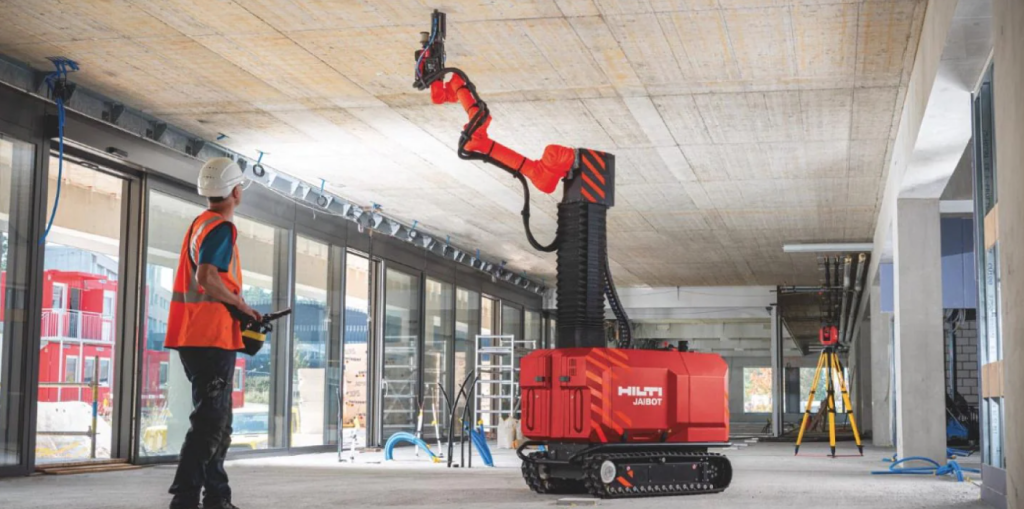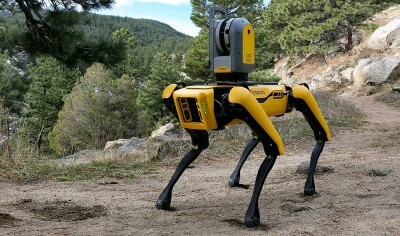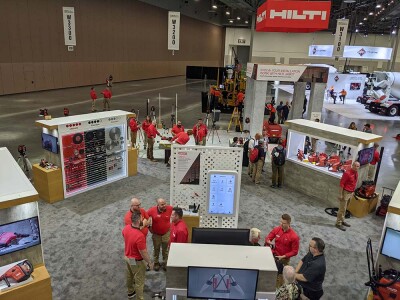As a hardware company providing equipment and services to the construction industry, Hilti has gained extensive knowledge through direct interaction with contractors. A key area of focus for many contractors is transforming their workflows toward greater integration and digitization. Hilti has a continuing goal of assisting contractors with this transformation, helping their customers and industry be more productive, operate more safely, and reduce waste (of time, personnel, or resources).
One approach Hilti is taking to bring digitization to construction is by innovating new technologies that are the best fit for their customers and the industry, such as automation and robotics. We connected with Rafael Garcia, CMO & Sr. VP of Marketing at Hilti, to talk more about automation in construction and how Hilti sees itself within that rapidly-changing landscape.
Preparing contractors for digital workflows
Fundamentally, the cause of inefficient workflows in construction are well known - siloed information, lack of access to information when needed, and difficulties in monitoring construction progress for accuracy. These are all challenges that need to be overcome, says Garcia.
“We’re kind of split into two parts: One interaction happens in the design phase with architects, engineers, structural engineers in the BIM model, and then a lot of the activities happen on the other side when you start pushing dirt and things get built. The link between the two is still fairly broken.”
“The other thing that is happening is that the ‘design, bid, build’ process is being gradually eliminated, and it’s a ‘design, build’ approach now. So as you are designing, you are building - being agile as much as you can, which requires a good oversight of as-built conditions and progress monitoring.”
While there has been pressure to look to tools enabling digitization (such as reality capture) as a way to improve design/build processes, the pressure to do so sometimes falls on contractors. Hilti has stepped in to help contractors and subcontractors adopt automation and pursue digitization and guide them to get the most out of BIM, ultimately helping them translate these new workflows to the job site.
“We’ve seen a lot of use of reality capture as basically a monitoring tool, as well as as-built identification of conditions in order to then give input to designers or architects and say, ‘Okay, how will we work around this,’ or ‘What do you want us to do with that?’.”
"There are the new things you are building, and then there is the environment. That could be as-built conditions or just topography of environmental conditions - but you need to know what you're working with."
“All this preparation is just critical to allow automation to operate efficiently. If you don’t do all that pre-work, then you’re not going to get the benefit of the ‘last mile’ automated solution. That’s how we’re navigating, trying to bring - from the manufacturer’s side - solutions that can be adopted on the contractor’s side.”
Automation can capture, but then what?
While there are a variety of solutions to help to automate job site documentation and reality capture - from robot dogs to wearable scanners - they share a common goal of attempting to get better information more quickly and with less risk to workers. In addition, more automated solutions can free up workers for other tasks.
“There are obviously certain job site conditions where not having people needing to do these tasks is good because it is a corrosive or unhealthy environment, or others where you want to restrict the number of people inside it for clean or sterile environments and so on,” says Garcia.

“The other reason is that labor is scarce. You want people to do higher value things over a repetitive strenuous application step. Is there a better way that a robot or some sort of scanning solution or drone can take care of those tasks? That’s a big question for us.”
There are two challenges top of mind for Garcia when thinking about putting automated solutions for documentation in place. The first is the stability and robustness needed for accurate reality capture. Is there a trade-off between the accuracy of stationary scanners vs. the portability of SLAM, wearables, or drones? Once the accuracy needs have been satisfied the second consideration is what to do with the data.
“The data transfer piece is another big question right now - how do you take that information and transport it usably so you don’t have a huge data load, but still end up with enough detail or granularity to use it for design, dimensioning, or other uses?”
“Those are really the big questions we’re asking ourselves - and we recognize that we need to be flexible in what sort of vehicle may transport the reality capture solution - it could be a person but it could also be something automated.”
Garcia also stressed that as the industry pursues digitization, there will be a lot more data captured, and that can pose a challenge.
“There’s going to be a vibrant environment for data-driven services. That’s another area where we’re investing - our idea is to not only produce the hardware but be part of the service execution that we offer to our clients."
"Just a couple of years ago everybody just wanted more data - so we went and captured data. Now they say we have tons of data, what do we do with it?”
To Hilti, the industry is signaling that there is an unmet need for the organization and management of data, as well as tools that can provide additional insights about what actions can be taken as a result of analyzing the data.
“We believe we have a good opportunity at Hilti because we’re a global company and operate in the construction industry with a professional set of contractors in different trades. We will be able to benchmark how a client’s data compares to someone else’s data in the same size and number of projects, helping them to optimize their process.”

“Imagine that data in the future may not always need to be interpreted and brought to the C-suite, some of that is where actions can be taken, so you can roll right into an ERP system and affect planning and other factors.”
Working together to find the best solutions
In 2019, Trimble, Hilti, and Boston Dynamics, maker of the Spot Robot, announced plans for collaboration to explore the integration of their construction management software solutions, GNSS technology, and reality capture devices. The companies planned to develop a “proof-of-concept” solution equipped with Trimble and Hilti’s reality capture devices as Spot’s payload.
“No single company can change this industry by itself. We’ll have to collaborate - where everyone brings their core expertise to try to come up with solutions.”
“This is where partners like Trimble fit nicely because they are focusing on workflow and software solutions that manage all the different stages of construction. So this partnership will set out to answer the question of how we transfer data, to what extent and for what purpose.”
“I think it is a good thing that as technology evolves, we’re able to capture more accurate data with less gigabytes of size. With that, a lot of things become more manageable from a data transfer point of view.”
The construction job site of the future
Garcia envisions the job site of the future as one that would provide a safer and less strenuous environment for workers, with robot “partners” to help take on more arduous tasks.
“Jaibot, for example, is a robot partner to the construction worker where highly repetitive strenuous activities get taken care of by a robot, not a person, but the person still needs to be there to assess conditions. There are decisions that humans should still make, but the actual effort of drilling 500 times overhead - that is something that a robot should do.”
“Things that are related to silica dust as well, we are doing a lot of things to capture dust and reduce exposure, for example, heavy concrete grinding activities - where you are grinding all day getting a surface ready - that’s something an automated solution can do down the road. That’s really our goal - to take these risky activities, whether because they are high up and pose a fall risk or are strenuous or repetitive - we can automate things and bring solutions to them.”
Another opportunity for automation and reality capture in the future is job site organization and personnel management says Garcia.
“Right now, it’s a mess. We don’t know where people are, we don’t know where their stuff is, and if we know where it is, now that the site has progressed, where do we move it to as the job progresses? … Some of these things seem trivial, but they can be big productivity drains on a construction site.”

Finding solutions is not without challenges, including the real-world usability of some of the solutions being tested.
“A lot of these use cases are being tested with customers just to get a feel of what’s realistically doable. Smart people can dream up great ideas, but can they be utilized in a normal construction environment? Something simple like WiFi access could end up being an Achilles heel.”
Garcia, however, remains excited about the progress and the future.
“It’s super exciting because things that were dreams in the past can now actually be done!”
Learn more about Hilti's products and hardware at Hilti.com






